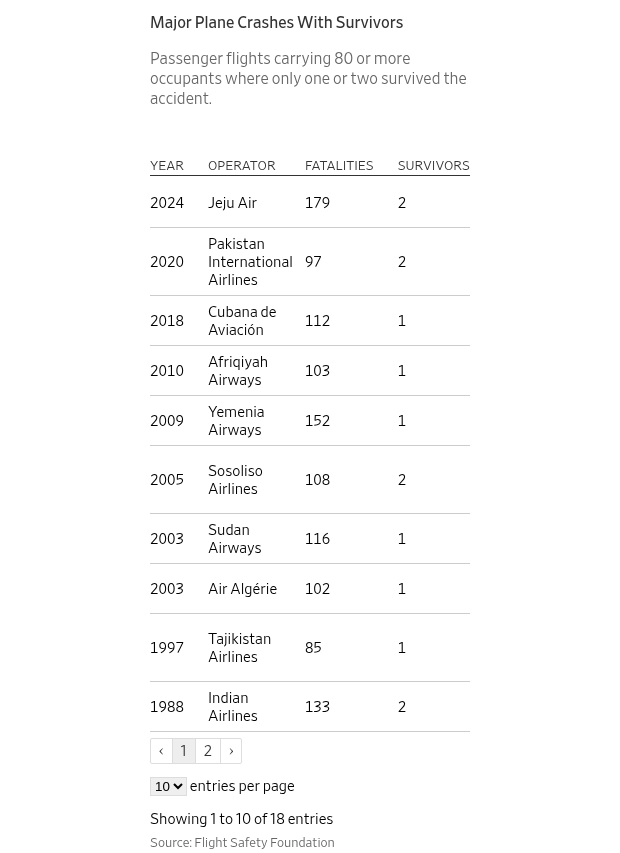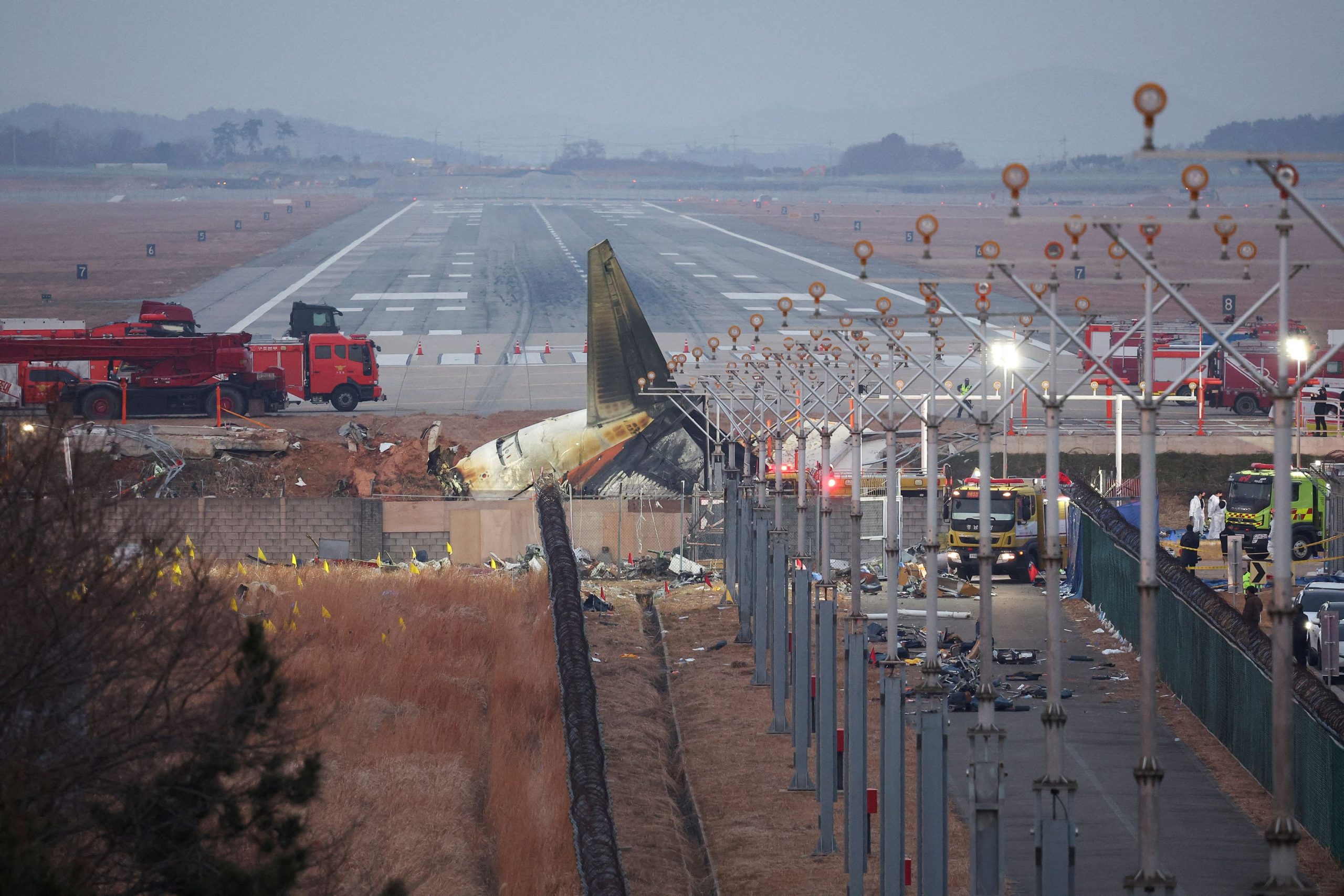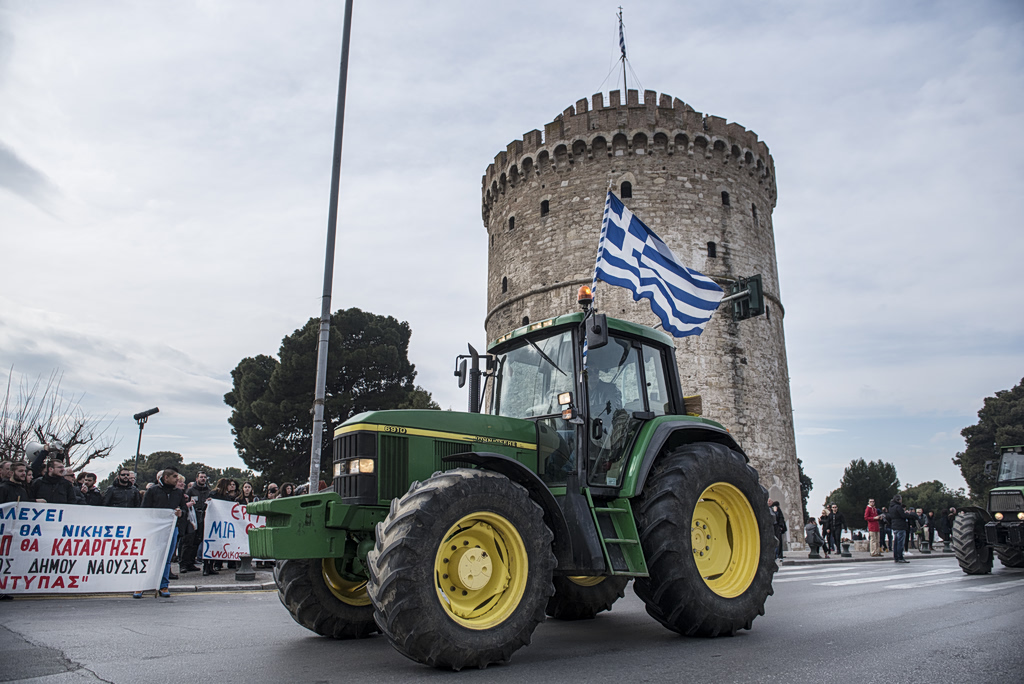When Jeju Air Flight 2216 crash-landed at a South Korean airport, skidded into an embankment beyond the runway and burst into flames, it seemed impossible that any of its 181 occupants could have survived.
Miraculously, two did—but how?
Investigators assessing the survivability of a plane crash focus on five factors: integrity of the aircraft, effectiveness of safety restraints, G-forces experienced by passengers and crew, the environment inside the aircraft and postcrash factors such as fire or smoke.
The two flight attendants who survived the Boeing 737-800 crash were seated in the very back of the plane , which was the only recognizable part of the aircraft left intact.
They are on a very short list among aviation’s worst disasters. Over the past eight decades of commercial travel, there have been just 17 other crashes where planes carrying 80 or more occupants left a sole survivor or two, according to data collected by the Flight Safety Foundation, an international nonprofit that provides safety guidance.
The Jeju Air flight attendants, a 33-year-old man and a 25-year-old woman who remain hospitalized in Seoul, sat in rear jump seats a few steps from where the jet’s tail snapped apart. Both are conscious and communicative, their doctors have said.
The man suffered bone fractures largely on the left side of his body and is wearing a brace to limit his neck movement due to spine injuries. The woman fractured her right ankle and possibly sustained other injuries on her right side. She recalled hearing a loud bang, then smoke billowing from the plane.
“There are a lot of reasons someone may survive in what appears to be a totally unsurvivable situation,” said Barbara Dunn , president of the International Society of Air Safety Investigators. “Depending on how the aircraft lands and where a passenger is seated has an impact. If you have your seat belt tightened, it limits the amount of flailing the body goes through. It also depends on whether a passenger is able to assume a brace position.”
Days before the Jeju Air accident, as many as 29 people survived the crash of an Azerbaijan Airlines flight that killed 38 people in western Kazakhstan. The preliminary conclusions of an Azerbaijani probe said the plane had been hit by Russian air-defense missiles. The crew battled for more than an hour to maintain constant speed and altitude before it crashed, The Wall Street Journal reported.
All surviving passengers were seated in the rear of the Azerbaijan Airlines plane.
The relative safety of where occupants are seated during a crash varies, and one of the biggest factors is how the aircraft touches down. Passengers up front in a nose-first crash bear the brunt of the impact, but other factors also come into play.
“A lot of people think it’s safer in the back than in the front,” Dunn said. “Not necessarily. How quick the fire takes over and how quick you can get to an exit, all those things matter as well.”
In January 2024, Japan Airlines was able to evacuate hundreds of passengers before the frame of their Airbus A350 collapsed in flames after a collision with another jet upon landing.
The National Transportation Safety Board deems a crash “survivable” if the forces transmitted to occupants don’t exceed the limits of human tolerance and the structure of the aircraft surrounding the occupants remains largely intact. A crash is deemed nonsurvivable when the G-forces are so great, the body can’t withstand the punishment.
G-forces are the gravitational forces that keep humans grounded on earth. In daily life, humans are subjected to 1 G. A roller coaster or a rapidly accelerating electric car can create two or three times that force.
In general, a human will lose consciousness at 4 G’s or 5 G’s—although they have survived greater forces, according to Lonnie G. Petersen , a professor of aeronautics and astronautics at the Massachusetts Institute of Technology. The effect depends on the number of G’s and the direction and duration of the force.
If an aircraft such as the Boeing 737 that crashed in South Korea sustains no more than 9 G’s in forward motion, occupants have a reasonable chance of escaping serious injury, according to University of North Dakota professors Thomas Zeidlik and Nicholas Wilson , who referenced federal airworthiness standards.
“The occupants will most likely survive with bumps and bruises,” said Zeidlik, who researches aerospace physiology. “Crumple zones, much like cars, are built into modern airplanes to help with this, as well as air bags, seat belts and other devices.”
The NTSB survivability definitions don’t take into consideration the effect of hazards such as smoke or fire, nor do they hinge on whether there are, in fact, survivors in a crash.
“When you hear survivable, you’d think people survived, and when you hear non-survivable, you’d think everybody dies,” said Anthony T. Brickhouse , an expert in aerospace safety and a professor at Embry-Riddle Aeronautical University. “We’ve had people survive what we would call nonsurvivable crashes, and we’ve also had people die in what we would call survivable crashes.”
On Monday, South Korea extended the closure of Muan International Airport, where the Jeju Air crash occurred, by another week to Jan. 14. Authorities over the weekend completed a roughly two-hour transcription of the cockpit voice recorder file, though haven’t committed to releasing it publicly. Key focuses of the joint U.S.-South Korean probe are why the plane made a belly landing without its landing gear, as well as if the location of the concrete-reinforced embankment met international standards.
Air-safety experts have called the crash puzzling. South Korean police have raided the offices of Jeju Air and the airport, with a search warrant issued on charges of professional negligence resulting in death.
To understand occupant-survivability rates in serious accidents, the NTSB examined commercial flights between 1983 and 2017. Serious accidents were defined as having had a fire, at least one serious injury or fatality and a substantially damaged or destroyed aircraft. Thirty-five crashes met that criteria.
In one, a 4-year-old girl was the only survivor among 155 occupants aboard a McDonnell Douglas DC-9 that crashed shortly after takeoff in Detroit in 1987.
The wreckage of Northwest Airlines Flight 255 was strewn over a 3,000-foot crash path that crossed two highway overpasses, according to the NTSB accident report. All of the passenger seats were detached and scattered along the way. The surviving child, who had been traveling with her parents and brother, was found in the wreckage beneath one of the overpasses.
She had been assigned seat 8F.
Just over half of the 3,823 occupants in the accidents studied by the NTSB survived with minor or no injuries; 6.3% experienced serious injuries; 27% died from impact; 4.1% died from fire or smoke; and about 10% died from other or unknown causes.
In its Northwest 255 accident report, the NTSB said the passengers and crew died of blunt-force trauma, the plane disintegrated during final impact, and the crash destroyed the cabin. It was, the report concluded, nonsurvivable—except for a combination of fortuitous circumstances that spared one preschooler.
“Sometimes things happen, and it’s really hard to explain,” Brickhouse said. “I hate to use the term, but sometimes luck does come into play.”

Write to Jo Craven McGinty at jo.mcginty@wsj.com and Timothy W. Martin at Timothy.Martin@wsj.com
Corrections & Amplifications undefined A McDonnell Douglas DC-9 was incorrectly referred to as a McDonald Douglas DC-9 in an earlier version of this article. (Corrected on Jan. 6)



